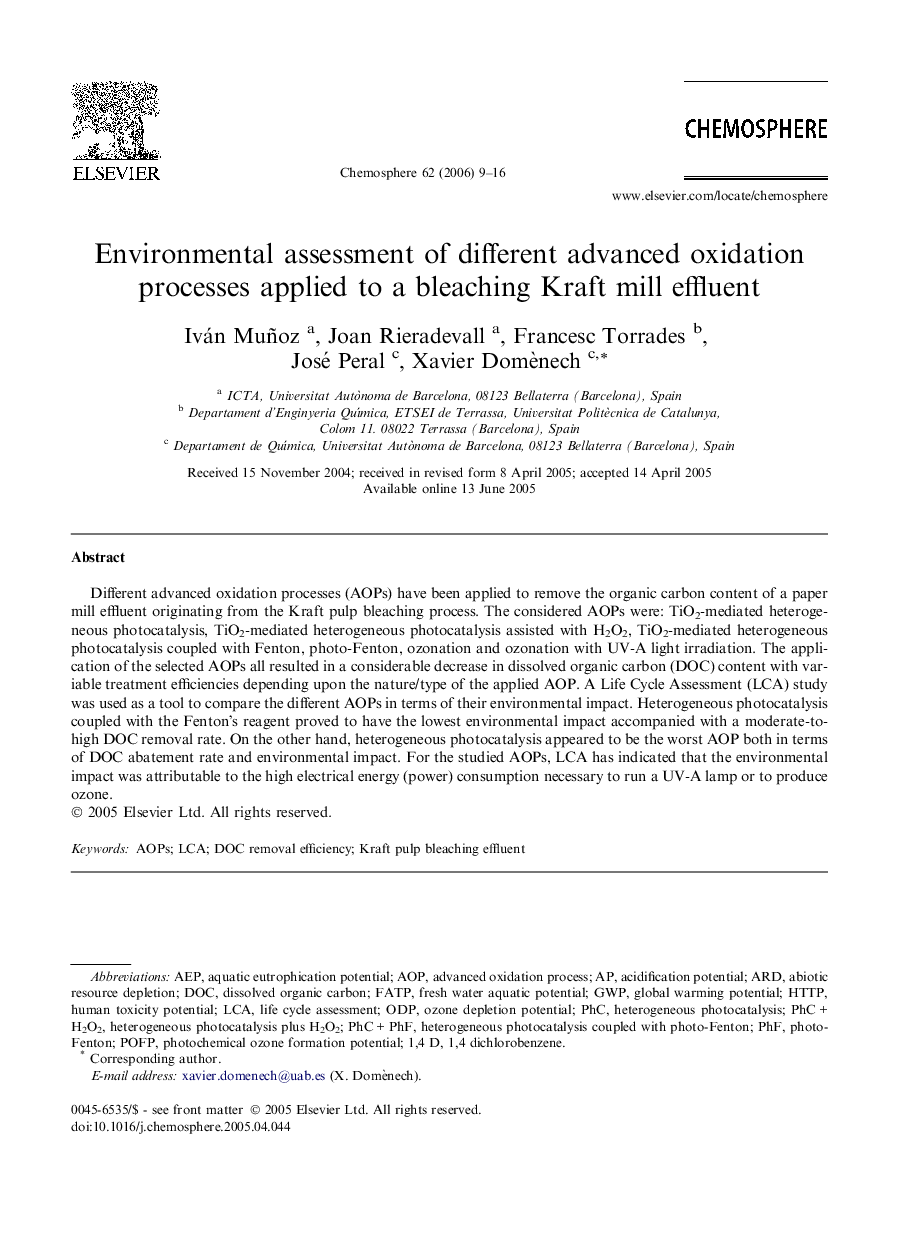| کد مقاله | کد نشریه | سال انتشار | مقاله انگلیسی | نسخه تمام متن |
|---|---|---|---|---|
| 4417060 | 1307820 | 2006 | 8 صفحه PDF | دانلود رایگان |
عنوان انگلیسی مقاله ISI
Environmental assessment of different advanced oxidation processes applied to a bleaching Kraft mill effluent
دانلود مقاله + سفارش ترجمه
دانلود مقاله ISI انگلیسی
رایگان برای ایرانیان
کلمات کلیدی
GWPHTTPAEPDOCPHFAOPFATPPHCARDAOPs - AOP هاODP - RIPLCA - ارزیابی چرخه حیاتLife Cycle Assessment - ارزیابی چرخه عمر یا چرخه حیاتPhoto-Fenton - عکس فنتونAdvanced oxidation process - فرایند اکسیداسیون پیشرفتهHeterogeneous photocatalysis - فوتوکاتالیزه ناهمگنAcidification Potential - پتانسیل اسیدی شدنOzone depletion potential - پتانسیل تخریب اوزونhuman toxicity potential - پتانسیل سمیت انسانglobal warming potential - پتانسیل گرمایش جهانیAbiotic resource depletion - کاهش منابع اببیوتیDissolved organic carbon - کربن آلی حل شده
موضوعات مرتبط
علوم زیستی و بیوفناوری
علوم محیط زیست
شیمی زیست محیطی
پیش نمایش صفحه اول مقاله

چکیده انگلیسی
Different advanced oxidation processes (AOPs) have been applied to remove the organic carbon content of a paper mill effluent originating from the Kraft pulp bleaching process. The considered AOPs were: TiO2-mediated heterogeneous photocatalysis, TiO2-mediated heterogeneous photocatalysis assisted with H2O2, TiO2-mediated heterogeneous photocatalysis coupled with Fenton, photo-Fenton, ozonation and ozonation with UV-A light irradiation. The application of the selected AOPs all resulted in a considerable decrease in dissolved organic carbon (DOC) content with variable treatment efficiencies depending upon the nature/type of the applied AOP. A Life Cycle Assessment (LCA) study was used as a tool to compare the different AOPs in terms of their environmental impact. Heterogeneous photocatalysis coupled with the Fenton's reagent proved to have the lowest environmental impact accompanied with a moderate-to-high DOC removal rate. On the other hand, heterogeneous photocatalysis appeared to be the worst AOP both in terms of DOC abatement rate and environmental impact. For the studied AOPs, LCA has indicated that the environmental impact was attributable to the high electrical energy (power) consumption necessary to run a UV-A lamp or to produce ozone.
ناشر
Database: Elsevier - ScienceDirect (ساینس دایرکت)
Journal: Chemosphere - Volume 62, Issue 1, January 2006, Pages 9-16
Journal: Chemosphere - Volume 62, Issue 1, January 2006, Pages 9-16
نویسندگان
Iván Muñoz, Joan Rieradevall, Francesc Torrades, José Peral, Xavier Domènech,